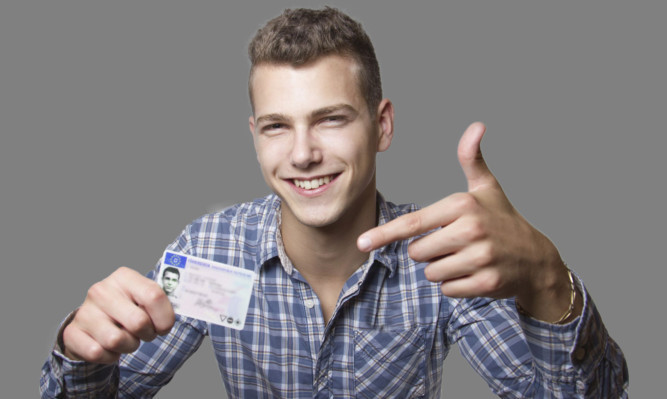
Warning for online drivers.
A craze which sees people post photos of their driving licences online is fuelling a digital crime feeding frenzy.
People who have just passed their test are uploading snaps of their credit card-sized EU driving licences to sites such as Instagram, Twitter and Facebook.
Web safety experts warn they’re paving the way for crooks to access private data, which they can use to commit identity fraud and gain entry to password-protected accounts.
Internet safety expert Kevin Gourlay described the trend as “madness”.
He said: “There are so many huge risks in posting these incredibly sensitive documents online. Drivers’ licences tell people your date of birth, where you live, and even include your photo.
“It opens the gates for hackers to steal data which can then be used to hack into accounts you believed were safe.”
In a Sunday Post investigation, we used a search facility on an Instagram app and found driver ID cards online.
In under 10 minutes, we discovered more than 60 full licences that had been uploaded in the last four weeks alone, all of which were unedited and easy to copy.
Mr Gourlay, who is a lead volunteer with (ISC)2 Safe and Secure Online, and head of technology security Platinum Squared Ltd, added: “Many websites on which users have accounts ask for a four-digit passcode. For probably 50% of those, it will be their own birthday.
“Opportunist online thieves will then use that to try and gain entry to your private information from social networks to banking and will often have success.”
A spokesman for the police-run Action Fraud group said: “Fraudsters can use these details to open bank accounts, obtain loans, credit cards or goods in your name. “We’d discourage anyone from uploading photos of their driving licences to social media.”

Enjoy the convenience of having The Sunday Post delivered as a digital ePaper straight to your smartphone, tablet or computer.
Subscribe for only £5.49 a month and enjoy all the benefits of the printed paper as a digital replica.
Subscribe